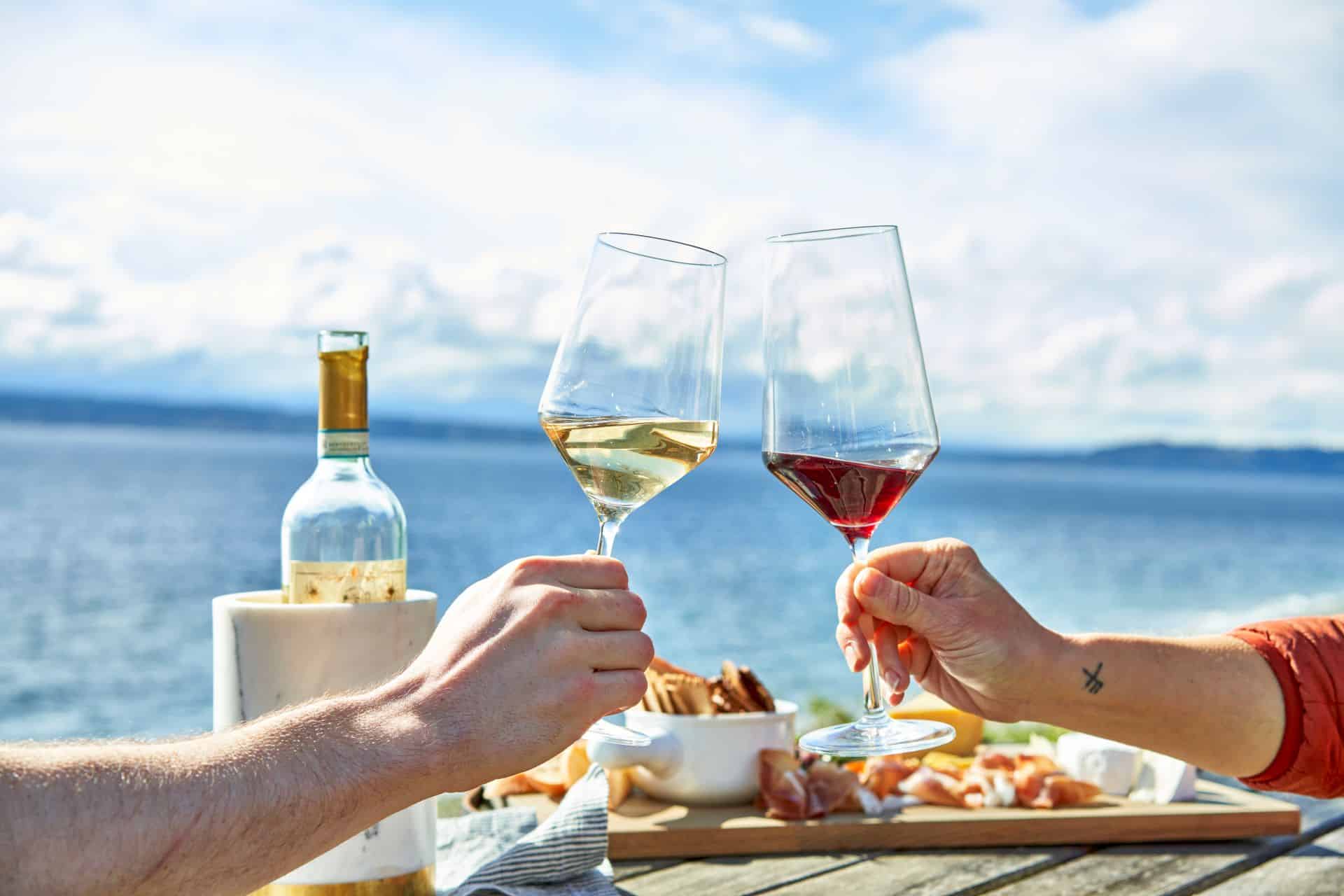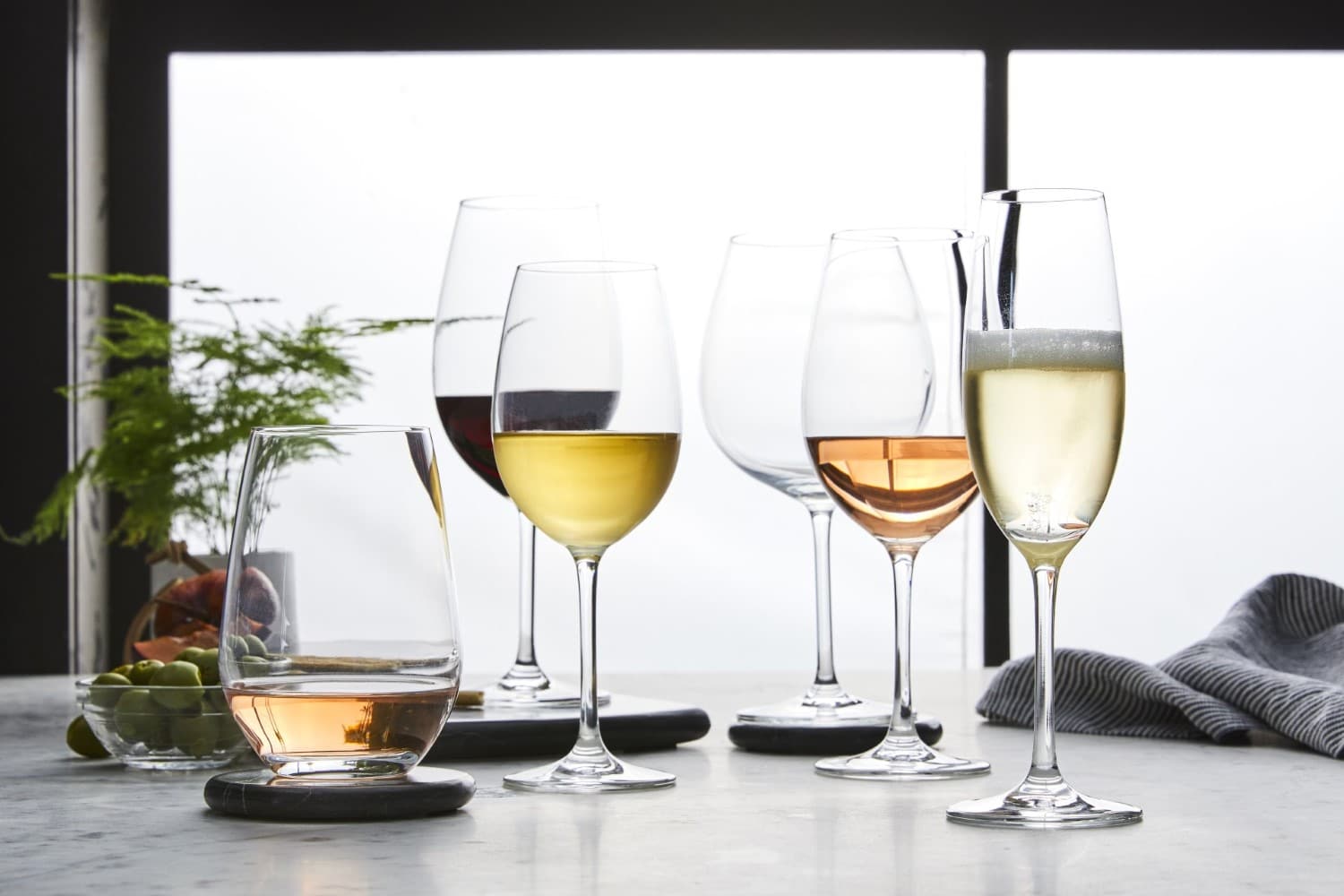Decisions, decisions.


We’ve all been there—standing in the Home section in front of a sparkling row of wine glasses, each with a unique shape, size or stem length, feeling completely overwhelmed. Is it truly essential to have a specific glass for each wine type? Does the shape of a glass really enhance the wine-drinking experience?
The simple answer: yes, it does!
Different wines do have their preferred vessels, and the shape of a glass can significantly affect the aroma, taste and overall drinking experience. And whether you’re a casual sipper or a wine connoisseur, understanding the art and science behind wine glasses can transform your appreciation for this age-old elixir.
We’ve got you covered on the basics—dive in to learn about how to choose the ideal wine glass to elevate every sip.
Hungry for more? We’ve got everything you need to host the wine tasting party of your dreams—from glassware and ice buckets to drink markers and reusable corks.

Just as the vineyard’s soil and climate influence the character of each bottle, the glass that you drink out of plays a big role in the wine experience, accentuating the vino’s best qualities and providing a more enriching sensory journey. Here are some ways that the glassware affects the wine:
By no means are stemless glasses a bad choice! Stemless glasses are less likely to tip over and are more compact for storage. Some people find them more comfortable to hold as well. For many people, the convenience and aesthetic appeal might outweigh the potential temperature considerations.

At the most basic level, wine glasses can generally be divided into two categories based on wine color: red and white. Here’s how the types of wine glasses differ:
Red wine glasses are generally larger and rounder than white wine glasses, with a wider opening. This design facilitates more aeration, allowing the complex flavors and aromas in red wines to emerge. It also directs wine to the center of your palate, balancing the wine’s fruit, acidity and tannins.
Popular types of red wine glasses include:
Typically smaller than red wine glasses, white wine glasses preserve floral aromas and help the vino maintain a cooler temperature. The narrower opening directs wine to the tip and sides of the tongue, emphasizing the wine’s freshness and acidity.
Popular types of white wine glasses include:
Beyond the standard red and white wine glasses, there’s a variety of specialized wine glassware designed to enhance the experience of specific wine styles and categories. Popular options include:

Each type of wine glass is designed to highlight the unique characteristics of specific wine varieties, from the effervescence of champagne to the robust flavors of full-bodied reds. When selecting wine glasses for your collection, consider the following factors:
Type of wine
The type of wine you predominantly enjoy should heavily influence your choice of wine glasses.
For red wines, which are often complex and benefit from aeration, glasses with larger bowls are ideal. In contrast, white wines have subtler scents that need to be concentrated for better appreciation. Glasses designed for whites typically have narrower bowls to capture these delicate aromas effectively.
Sparkling wines are best enjoyed in tall, slender flutes. The design of these glasses preserves and channels the bubbles, heightening the sensory pleasure. Lastly, for dessert and fortified wines, which are generally stronger and sipped in smaller amounts, smaller glasses are preferred to accentuate their richness without overwhelming the palate.
Material
Crystal wine glasses, being more refined than regular glass, offer a clearer view of the wine and often provide a finer texture, enhancing the sensory interaction. However, they tend to be more delicate and can be pricier.
On the other hand, standard glass wine glasses, while durable and often more affordable, can still deliver an enjoyable wine experience. The choice between the two usually hinges on preference, budget and where and how you’ll be using the glasses.
Rim thickness
A thinner rim is generally preferable, as it provides a smoother flow of wine and is less obtrusive, letting you focus on the wine itself.
Stemmed vs stemless
Stemmed glasses allow you to hold the glass without touching the bowl, preventing the wine from warming from your hand’s heat. Stemless glasses, on the other hand, are more casual and less prone to being knocked over. They’re easy to store and versatile, but may not be ideal for wines sensitive to temperature changes.
Versatility
If you’re looking for a set that can serve multiple purposes, consider universal wine glasses or those suitable for a range of wine styles.
Cleaning and storage
Delicate glasses might require handwashing. Consider your willingness to maintain them—and the storage space you have available.
Tasting vs drinking
For everyday drinking, standard glasses will do. But if you’re into wine tasting, having specialized glasses can enhance the experience.
Remember, the best wine glass for you ultimately depends on your personal preferences, the types of wine you typically drink and how you plan to use them. Consider what aspects are most important to you and let that guide your selection.
Hungry for more? We’ve got everything you need to host the wine tasting party of your dreams—from glassware and ice buckets to drink markers and reusable corks.
JOIN THE CONVERSATION